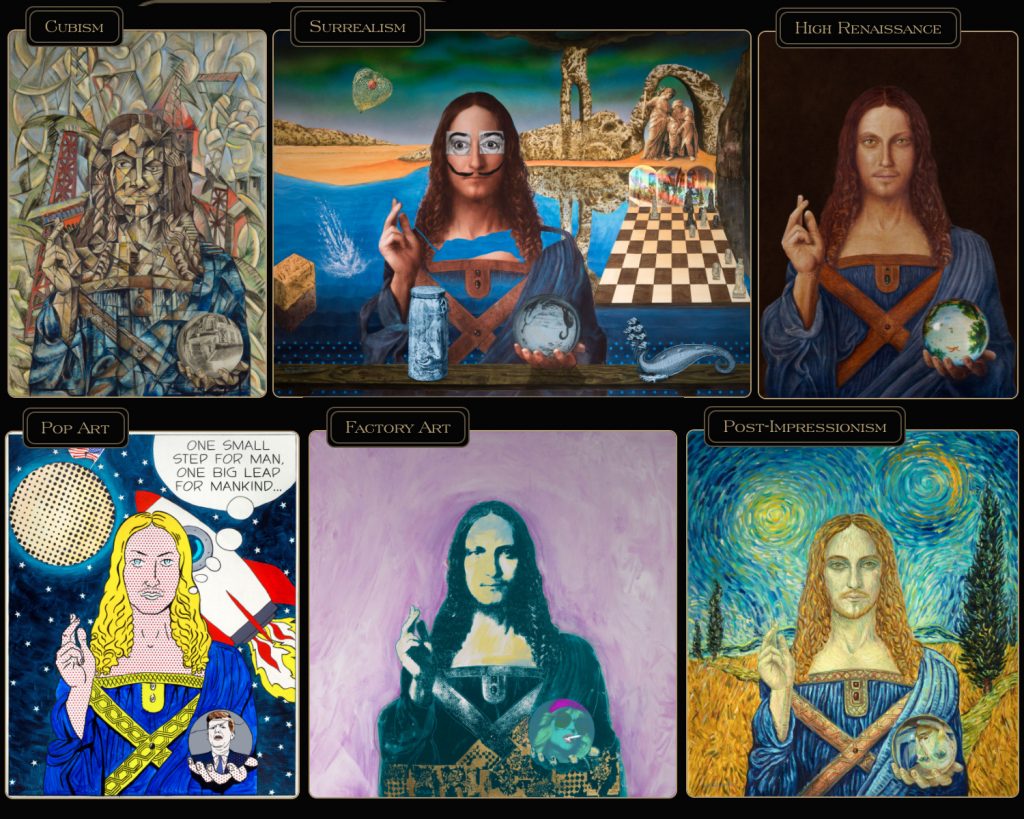Art World
Master Forger Wolfgang Beltracchi Shows Off His Skills (and Pointed Humor) With a New NFT Collection
In a wink to notions of authenticity, buyers won't know which version they are getting.

In a wink to notions of authenticity, buyers won't know which version they are getting.

Sarah Cascone

The notorious art forger Wolfgang Beltracchi is releasing an NFT art collection. Fittingly, the artist—infamous for his uncanny ability to mimic the work of others—is making 4,608 versions of Leonardo da Vinci’s Salvator Mundi, in a variety of different artistic styles.
The series, titled “The Greats,” begins with the High Renaissance, with the work of Da Vinci, before moving to Vincent van Gogh and Post-Impressionism, Salvator Dalí and Surrealism; Pablo Picasso and Cubism; Roy Lichtenstein and Pop Art; and Andy Warhol and “Factory Art.” The final set represents the “Beltracchi Era,” with the forger finally forging, so to speak, his own artistic style.
Beltracchi was attracted to the NFT market because it “offers artists a platform to market themselves independently and makes them independent from traditional art market mechanisms,” he told the crypto news site the Block.
The 70-year-old German artist spent 40 years creating forgeries of the work of famous artists before being caught in 2010. He was convicted in 2011, but only served half of his six-year sentence before his release from prison.

Some of the Salvator Mundi-inspired works from Wolfgang Beltracchi’s new NFT collection “The Greats.”
By using Salvator Mundi as the basis for his NFT debut, Beltracchi reminds the art world that even after his unmasking, other fakes and forgeries may still be hidden in plain sight, in the collections of the world’s most prestigious museums. If even the world’s most expensive painting, which sold for $450 million at Christie’s New York in 2017, is clouded with suspicion, how can we truly trust the authenticity of any so-called masterpiece?
The artist chose Salvator Mundi as his subject because “Beltracchi is the only person with the necessary skills to implement it,” a spokesperson told the Block. “He has managed to fool the ‘art experts’ hundreds of times with his re-creations of famous painters’ work.”
Only a handful of NFTs in “The Greats” collection have been revealed to date, but the full set of artworks will reportedly go on sale in eight to 10 days. They will be available on the Ethereum blockchain, but through a “hidden sale” function whereby buyers will mint a randomly selected NFT with each purchase—and Chainlink’s Verifiable Random Function (VRF) ensuring they have no control over what they get.